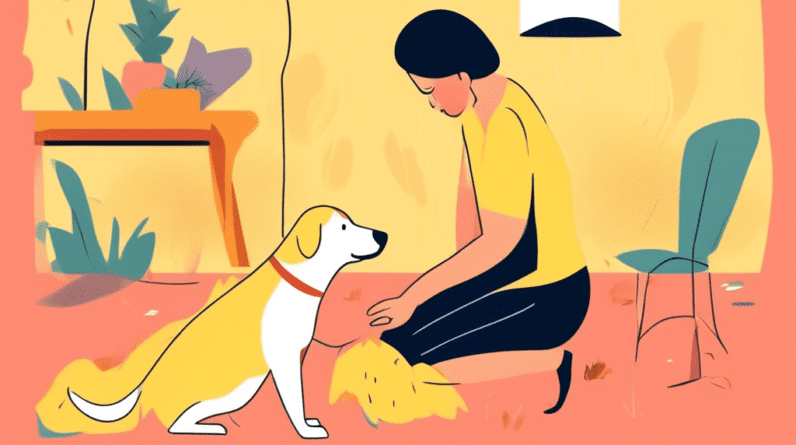
How Much Exercise Does a Labrador Puppy Need?
Labrador Retrievers are renowned for their boundless energy, especially during puppyhood. These playful bundles of fur thrive on physical activity and mental stimulation. But how much exercise does a Labrador puppy actually need? Over-exercising can be detrimental to their developing joints, while under-exercising can lead to behavioral issues stemming from pent-up energy.
The Five-Minute Rule: A Good Starting Point
A common guideline for exercising Labrador puppies is the five-minute rule. This rule suggests that for every month of age, a puppy can handle five minutes of exercise. So, a three-month-old Labrador puppy could enjoy roughly 15 minutes of exercise, while a six-month-old could handle about 30 minutes.
However, keep in mind that this is just a general guideline. Factors like individual energy levels, breed lines (show lines versus working lines), and the type of exercise can all influence how much activity your Labrador puppy needs.
Types of Exercise for Your Labrador Puppy
Exercise for your Labrador puppy doesn’t always have to mean long walks or intense runs. In fact, variety is key to keeping them engaged and preventing boredom. Here are some great ways to exercise your Labrador puppy:
1. Walks: Exploring the World
Walks are essential for socialization and exposing your Labrador puppy to various sights, sounds, and smells. However, remember to keep walks short and age-appropriate, gradually increasing the distance and duration as they grow.
2. Playtime: Unleashing Their Energy
Playing fetch, tug-of-war, or even just chasing bubbles in the backyard are fantastic ways to provide your Labrador puppy with a good workout while having fun. Remember to use appropriate toys and supervise playtime to prevent accidents.
3. Swimming: The Gentle Exercise
Labrador Retrievers are natural-born swimmers, and swimming is an excellent low-impact exercise for their joints. If you have access to a safe body of water, swimming can be a fun and refreshing activity for your Labrador puppy.
4. Training Sessions: Mental and Physical Stimulation
Training sessions, even short ones, provide both mental and physical stimulation for your Labrador puppy. Obedience training, trick training, and puzzle toys can all contribute to a well-exercised and well-rounded pup.
Recognizing Signs of Overexertion
While it’s crucial to keep your Labrador puppy active, it’s equally important to recognize signs of overexertion. Pushing them beyond their limits can lead to injuries and health problems in the long run. Watch out for these signs:
* **Excessive Panting:** While some panting is normal during exercise, excessive panting that doesn’t subside with rest can be a sign of overheating or exhaustion.
* **Lagging Behind:** If your Labrador puppy starts to lag behind on walks or seems reluctant to continue playing, it’s time to stop and let them rest.
* **Limping or Stiffness:** Any signs of limping, stiffness, or pain should be taken seriously. Contact your veterinarian if you notice these symptoms.
Tips for Exercising Your Labrador Puppy
Here are some helpful tips for exercising your Labrador puppy:
* **Avoid Exercising on Hard Surfaces:** Puppy bones and joints are still developing. Exercising on hard surfaces like concrete can be harsh on their growing bodies. Opt for softer surfaces like grass or dirt whenever possible.
* **Don’t Overdo It:** Start with short bursts of exercise and gradually increase the duration and intensity as your puppy grows. Remember, it’s better to err on the side of caution.
* **Make It Fun:** Exercise should be enjoyable for both you and your puppy. Use positive reinforcement, praise, and treats to make the experience positive.
* **Listen to Your Puppy:** Your Labrador puppy will let you know when they’ve had enough. Pay attention to their body language and give them breaks when needed.
* **Consider the Weather:** In hot weather, exercise your puppy during the cooler parts of the day, such as early morning or late evening. Always provide access to fresh water.
The Importance of Mental Stimulation
While physical exercise is crucial, don’t underestimate the importance of mental stimulation for your Labrador puppy. A bored Labrador can quickly become a destructive Labrador. Here are some ways to mentally engage your puppy:
* **Puzzle Toys:** Puzzle toys that require your puppy to work for treats are a great way to challenge their minds.
* **Interactive Games:** Games like hide-and-seek or find the treat can provide mental stimulation and strengthen your bond.
* **Training Sessions:** Regular training sessions, even short ones, help keep your Labrador puppy’s mind sharp and prevent boredom.
FAQs About Labrador Puppy Exercise
Here are answers to some frequently asked questions about exercising Labrador puppies:
Can I take my Labrador puppy for a run?
It’s best to avoid running with your Labrador puppy until they are fully grown, which is around 12-18 months of age. Running on hard surfaces before their joints have fully developed can lead to long-term problems.
How much exercise does an adult Labrador need?
Adult Labradors are generally active dogs and need a significant amount of exercise, typically around 60-90 minutes per day. However, this can vary based on factors like age, health, and individual energy levels.
What are some signs my Labrador puppy isn’t getting enough exercise?
Common signs of under-exercised Labrador puppies include:
* Destructive chewing
* Excessive barking or whining
* Hyperactivity and restlessness
* Difficulty focusing during training
My Labrador puppy seems tired all the time. Should I be concerned?
While Labrador puppies are energetic, they also need plenty of rest. However, if your puppy seems excessively lethargic, it’s best to consult with your veterinarian to rule out any underlying medical conditions.
Conclusion
Providing your Labrador puppy with the right amount of exercise is essential for their physical and mental well-being. By following the guidelines in this article, recognizing signs of overexertion, and offering a variety of activities, you can help your Labrador puppy grow into a happy, healthy, and well-adjusted dog. Remember, a tired puppy is a good puppy!






